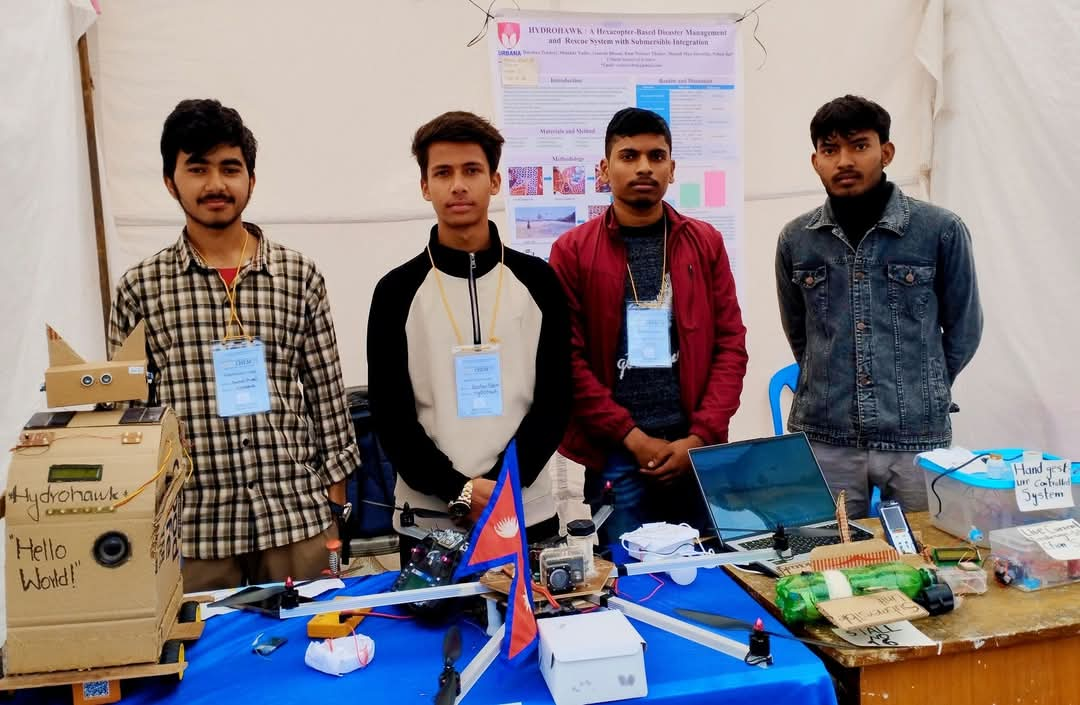Pulchowk, Lalitpur - In a remarkable feat of innovation, a group of Grade 11 students from Urbana School of Science have developed HydroHawk, a hexacopter-based disaster management and rescue system integrated with submersible capabilities. This pioneering project addresses the critical challenges posed by natural disasters, such as floods, that devastate communities worldwide.
 The HydroHawk system is designed to locate and rescue flood victims by combining aerial and underwater functionalities. During testing, it demonstrated stable flight, effective obstacle avoidance, and the ability to submerge for underwater operations. Its integration with GPS tracking, gesture and voice control, and real-time data updates provides a cutting-edge solution for efficient disaster response.
The HydroHawk system is designed to locate and rescue flood victims by combining aerial and underwater functionalities. During testing, it demonstrated stable flight, effective obstacle avoidance, and the ability to submerge for underwater operations. Its integration with GPS tracking, gesture and voice control, and real-time data updates provides a cutting-edge solution for efficient disaster response.
Key Features and Achievements:
Hexacopter Stability: Ensured stable operation even in turbulent conditions.
Obstacle Avoidance: Ultrasonic sensors enabled safe navigation around obstacles.
Submersible Capability: Allowed underwater navigation to locate submerged vehicles and individuals.
GPS Tracking: Delivered real-time updates on the device’s position.
The development process involved designing the frame, assembling motors, programming, and crafting submersible components. The project emphasizes autonomous navigation, voice and gesture controls, and enhanced sensor integration.
The HydroHawk has the potential to revolutionize disaster response, especially in flood-prone regions. While initial results are promising, the students recognize areas for improvement, such as increasing processing speed and sensor accuracy.
The team expressed gratitude to Urbana School of Science and their mentors, whose guidance was instrumental in realizing this project. As HydroHawk continues to evolve, it offers hope for more efficient and life-saving disaster management in the future.
This achievement showcases how young minds can contribute to addressing real-world challenges through innovation and determination.